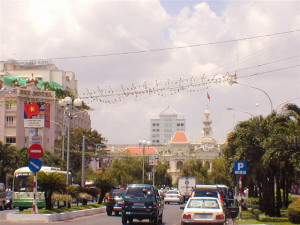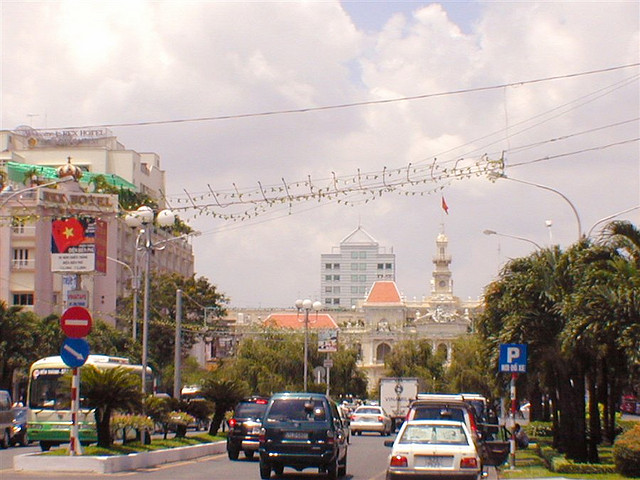 Economies in East Asia are expected to decelerate in growth momentum this year, even as the region remains one of the main growth drivers of the world economy, accounting for nearly two-fifths of global economic growth, according to a new World Bank report.
Economies in East Asia are expected to decelerate in growth momentum this year, even as the region remains one of the main growth drivers of the world economy, accounting for nearly two-fifths of global economic growth, according to a new World Bank report.
Overall, the region is expected to grow 6.5% in 2015, moderating slightly from 6.8% last year, forecasts the East Asia Pacific Economic Update released October 5.
The update says the region faces a challenging global environment. “The recovery in high-income economies remains gradual, global trade is growing at its slowest pace since 2009, and the widespread slowdown in developing countries has intensified, particularly in commodity producers affected by lower commodity prices,” it said.
“Growth in developing East Asia Pacific continues to be solid, but the moderating trend suggests policy makers in the region must remain focused on structural reforms that lay the foundation for sustainable, long-term and inclusive growth. These reforms include regulatory improvements in finance, labor and product markets, as well as measures that enhance transparency and accountability. These policies will reassure investors and markets, and help sustain growth that can help lift people out of poverty,” said Axel van Trotsenburg, World Bank East Asia and Pacific regional vice president.
Performance trends across East Asia are diverse. China’s economy is expected to grow at about 7% this year and gradually moderate thereafter, as its economy continues to shift toward a model more dominated by domestic consumption and services, which implies a gradual reduction of
The rest of developing East Asia is expected to grow 4.6% in 2015, similar to the rate last year. growth. Among the large Association of Southeast Asian Nations (ASEAN) economies, growth conditions will be most buoyant in the Philippines and Vietnam. In Indonesia and Malaysia, the outlook for business profits and household incomes is clouded by weak global commodity prices. In Thailand, uncertainty and economic vulnerabilities will continue to weigh on growth.
In the large ASEAN economies, Indonesia is seen to grow 4.7% in 2015, down 0.5% from the World Bank’s April 2015 forecast, and 5.3% in 2016, down 0.2% from the previous. Malaysia’s growth is predicted to be at 4.7% for both 2015 (unchanged) and 2016 (down 0.3%), while the Philippines should grow 5.8% this year (down 0.7%) and 6.4% next year (down 0.1%). Thailand’s economy is forecast to expand 2.5% in 2015 (down 1%) and 2% in 2016 (down 2%). As for Vietnam, its growth is expected to accelerate to 6.2% in 2015 (up 0.2%) and 6.3% in 2016 (up 0.1%).
Growth will ease, however, in many of the smaller economies. In Cambodia, lower agricultural output is hurting the economy, although growth will still be 6.9% this year. In Myanmar, severe flooding in July will likely drive down the pace of growth to 6.5%, from 8.5% in 2014. Pacific Island countries, meanwhile, will see moderate growth.
“Developing East Asia’s growth is expected to slow because of China’s economic rebalancing and the pace of the expected normalization of U.S. policy interest rates,” said Sudhir Shetty, chief economist of the World Bank’s East Asia and Pacific Region. “These factors could generate financial volatility in the short term, but are necessary adjustments for sustainable growth in the long term.”
The report assumes a gradual slowdown in the Chinese economy in 2016-17. This scenario is likely because China has sufficient policy buffers and tools to address the risk of a more pronounced slowdown, including relatively low public debt levels, regulations restricting savings outside of the banking system, and the state’s dominant role in the financial system. If China’s growth were to slow further, the effects would be felt in the rest of the region, especially in countries linked to China through trade, investment, and tourism.
The report also assumes that a gradual increase in U.S. interest rates will begin in the coming months. While this increase has been anticipated and is likely to be orderly, there is still a risk that markets could react sharply to such tightening, causing currencies to depreciate, bond spreads to rise, capital inflows to fall, and liquidity to tighten.
In the face of these possible headwinds, the report emphasizes two key priorities across the region: prudent macroeconomic management, aimed at shoring up external and fiscal vulnerabilities; and deeper structural reform, focused on encouraging private investment.
Photo: xiquinhosilva





